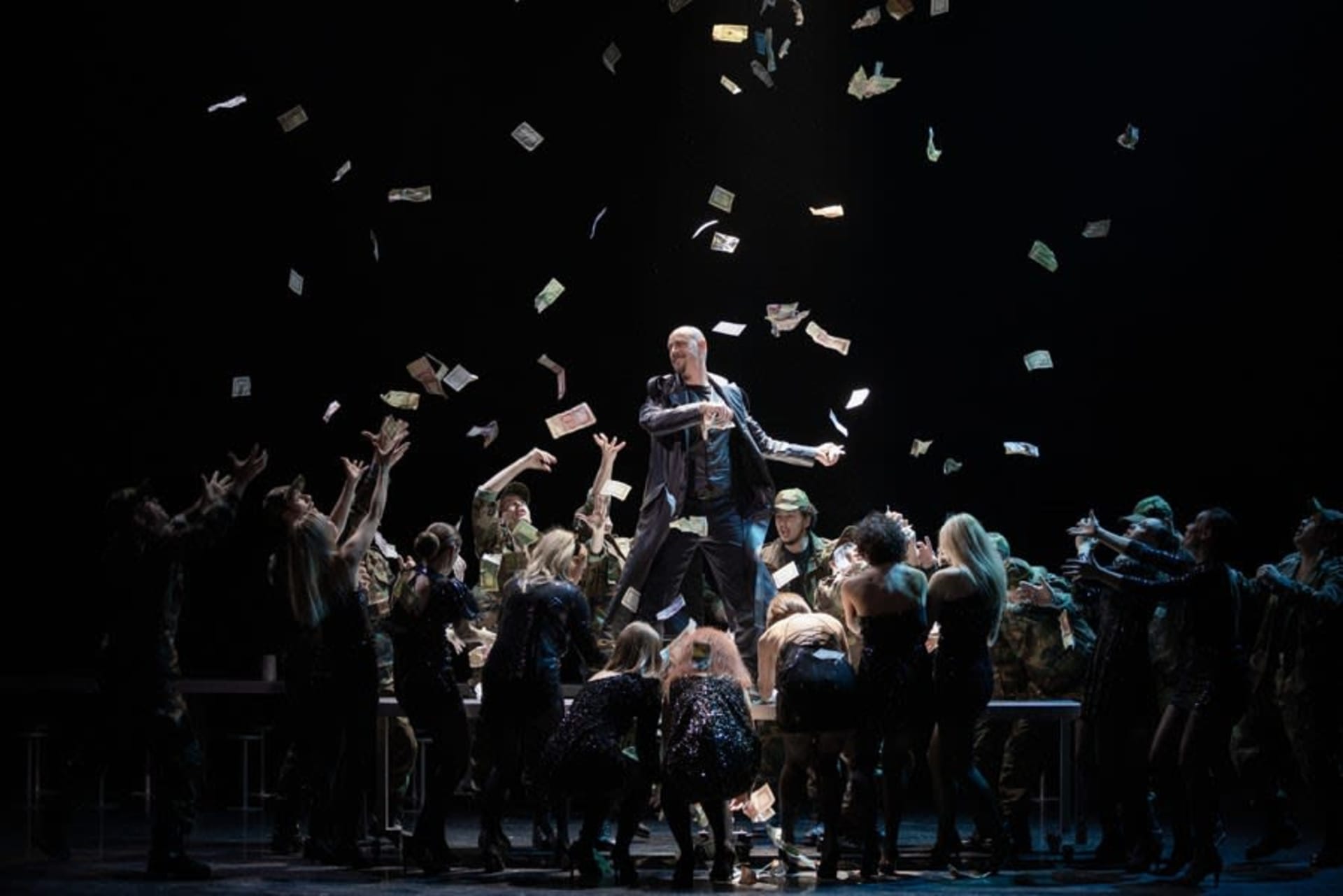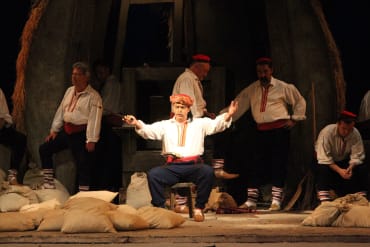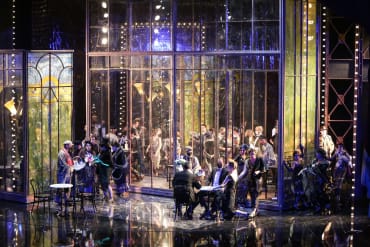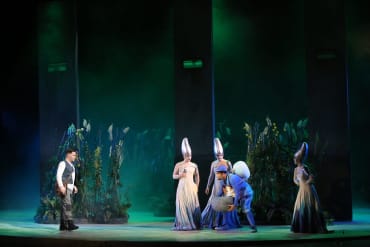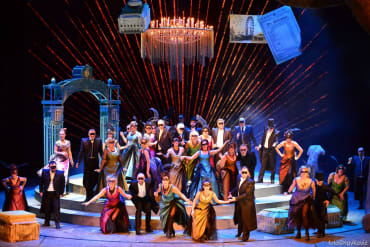ABOUT THE PERFORMANCE: THE METAMORPHOSIS OF LOVE
Tatjana Ažman
In our fourth opera premiere of the season, we will present Goethe’s masterpiece, fragmented in Gounod’s musical disguise through a prism of the transformative power of love. Gounod's Faust is considered one of the most picturesque romantic pieces in world operatic literature. Méphistophélès's gift of youth, which is at the same time the curse of Faust's soul, is rescued by a simple but the most powerful force – love of (for) Marguerite. The archetypal story of the struggle between good and evil, which ends in the apotheosis of love, has been stirring the depths and thus leaving a cathartic impact on the human spirit to this day.
The legend of Doctor Faustus – a healer, astrologer and alchemist of dubious reputation who sold his soul to the Devil to gain – only for a short time – all the treasures, powers and pleasures of the world – obtained mythical proportions soon after its first literary treatment at the end of the 16th century. The motif of Faust’s quest for the ultimate truth and his denial of conventional beliefs became a subject of numerous adaptations and interpretations in the centuries to come. The unusual literary model resonated not only among many writers, poets and playwrights (Marlowe, Lessing, Goethe, Klinger, Grabbe, Mann) but also attracted the attention of
numerous composers (Ignaz Walter, Gaspare Spontini, Ludwig Spohr, Hector Berlioz, Arrigo Boito, and many others) and thus also inspired French romantic composer Charles-Françoise Gounod.
Gounod (1818-1893) recapitulated the material for the opera after the first part of Goethe’s poem Faust,
which he became acquainted with in a French translation, in 1838. Librettists Jules Barbier and Michel Carré, who wrote the text based on the literary model by the classic from Weimar, did not try to capture its philosophical spirit but satisfied themselves more with the central love story between the main character and a simple girl, Marguerite. Despite moving away from the literary model and the adaptation, rather focusing on
Marguarite’s character and destiny, we should acknowledge the librettists for their skilful rendering of scenes, good selection of colourful and alluring images as well as efficient arrangement of dramatic highlights and lyrical passages. The composer's merit, on the other side, lies in his sense of the breadth of musical expression:
as a subtle musician, he managed to fully realise the possibilities offered to him by the libretto.
Faust was first presented to the world at the Théâtre Lyrique in Paris, in 1859. Although some considered
the work of the composer, who successfully established typical French features, too “German”, and there were also quite a few critics, who accused the opera, filled with beautiful melodies, of lack of musicality, it nevertheless became popular with the audience.
It marched triumphantly to the European opera stages a decade later, in 1869, when Gounod enriched his work for staging at the Paris Opera with some recitatives, parts (Valentin’s aria, Méphistophélès’s couplet in the fourth act) and a nearly twenty-minute long ballet sequence, thus offering Faust a structure that brought it closer to the grand opera productions
